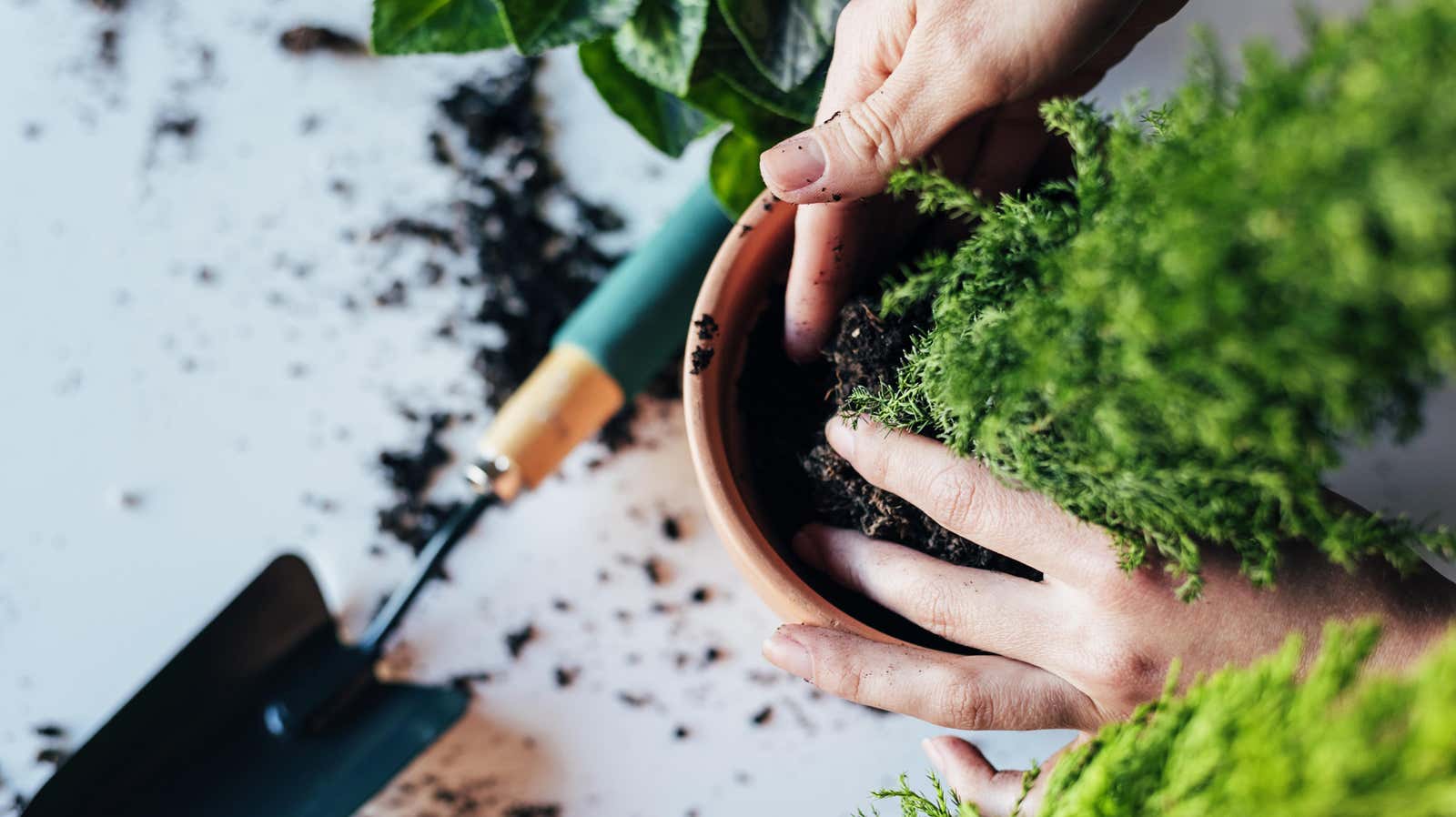That’s When It’s Time to Repot Your Houseplant

Caring for houseplants may seem complicated, but it doesn’t have to be. Transplanting is an easy step you can take to keep your houseplants healthy by revitalizing the soil and increasing the available nutrients. You can also repot the plant into a larger pot if it shows signs that it has outgrown the pot it is in. Follow these steps to repot and care for your houseplants like a pro with confidence.
To get started you will need newspaper or wax paper, potting mix , scissors , your plants, new pots where needed, gloves, and a shovel to scoop up the soil.
How to know when it’s time to repot a plant
It’s time to repot your plants if more than a year has passed since the last repotting, if the soil looks crusty or has mineral or salt deposits, or if the roots are growing through the drainage holes in the bottom of the container, indicating your plant needs more room to grow . You don’t need to upgrade to a larger container unless the last indicator is present. Plants that are doing well in their current excavation conditions are transplanted to freshen up the soil, but may return to their original pots.
How to transplant a houseplant
It’s a good idea to place newspaper or wax paper under the area you plan to work on first, to make it easier to clean up later. To take the plant out, hold the plant sideways and gently grasp the stems at the base, close to the soil. Then tap the bottom of the pot, gently pulling on the stems. Without twisting too much, it is sometimes helpful to move the plant a little to loosen it. This part may require some patience if the plant is stubborn, but don’t pull too hard or twist the stems because this can damage the plant’s vascular system.
Once the plant is free, gently loosen the roots with your fingers, breaking up any protruding roots. Make sure the roots can move a little, and cut off any thready roots that are too long. If the roots start to clump at the base of the pot, it may be time for a larger pot. For now, you should untangle them as gently and carefully as possible so the plant doesn’t grow back together – this condition can suffocate larger roots and cause water and nutrient access to the foliage to be blocked.
Root work has probably loosened up a lot of soil, which is fine because you will need to remove about one-third of the soil before repotting. Throw away surface soil if it is mineralized or crusty and make room for fresh soil and the nutrients your plant needs. You can shake the roots a little to get rid of excess soil.
After you’ve removed some of the old soil, add some new soil to the pot. Place the plant back in and cover the roots with the new potting soil, compacting it slightly without breaking the roots with your hands. Don’t over fill the pot because it will overflow when watering, and make sure the soil is a bit firm to allow oxygen to circulate. Then you just need to roll up the paper to discard and water the transplanted plant.